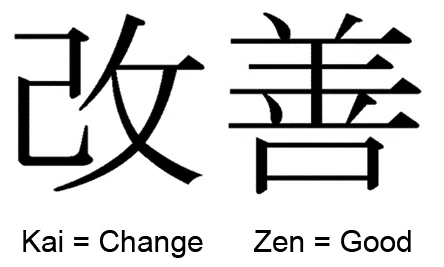ARE YOU WITH ME… JUST READ FURTHER…

With the arrival of new individuals, organizations can view existing processes and routines differently. This creates space for the organization to adapt to changes.
Continuous improvement as a routine
Employees are increasingly asking employers to renew their work. They are becoming more assertive and also opting for alternatives if they don’t like it. Moreover, more and more organizations are seeing that not all old ways of working still serve them. As a result, organizations face the challenge of operating more efficiently and flexibly. With the arrival of new technologies, services and products, it is also possible and better needed to improve. Motivated employees who actively evaluate and improve their work processes increase the competitiveness of the organization. The condition here is that continuous improvement becomes routine in the workplace.
Constant change
To be able to keep innovating constantly, the right culture and infrastructure in an organization is required. The management of employees by management is changing. Employees are given more room to excel themselves and teams are put together more to innovate together. It’s about the right balance in this. The framework must therefore be very clear. Both the output that is requested from employees, the people who can participate in innovation, and the time that is available for it. This requires a rigorous break with routines.
To break through routine, it is important to look with the employees at how we approach work and where improvements can be made. Activity Based Working has proven to be a very effective tool for this. Some examples are;
1. Increase the control space
Work, where, when and how you want. For this it is important that the employee has the same things at home as at the office. There is a need to digitize . A clear framework about what is allowed for the individual in collaboration with his colleagues and clarity about his / her output. This not only helps to break through routines, but also to greatly increase employee productivity and well-being.
2. Improve the office
How important is the office space with permanent workplaces in 2019? Does there still have to be an office or does that serve as focus space? Is there a large room where everyone sits together or are there many separate rooms where you can call or hold meetings via video ? It is important for employers to see whether or not they should invest in the office building in the future or in other options. By talking to employees about their routines and discovering together what the new way of working looks like, you gain new insights. Based on those insights, you can create a fantastic functional office building where people feel more at home, more satisfied and proud of their employer.
3. The performance of employees
Performance interviews are often held in a separate room, in a static position. The employee sits opposite the employer, just as with the application at the start. This immediately creates a certain atmosphere. This has an effect on the course of the conversation. If employees get more daily control and there is more room for feedback. Then functioning is no longer a heavy subject. It’s a conversation that everyone knows what’s coming. That is why it is best to also conduct this in a transparent room or in the open air. The space, but especially the openness, make a substantial difference.
Giving employees space and, where necessary, guiding them makes them feel heard and connected to the organization. Breaking routines, giving space to people and having an open work culture are only benefits for many organizations. And Activity Based Working is a perfect tool to take a big step in that. The success of every organization is hidden in the daily routine. So don’t get stuck in old habits.
STOP EATING ONLY CHAMPION CHOWMEIN ONLY. TRY NEW THINGS STEADY STEADY.

